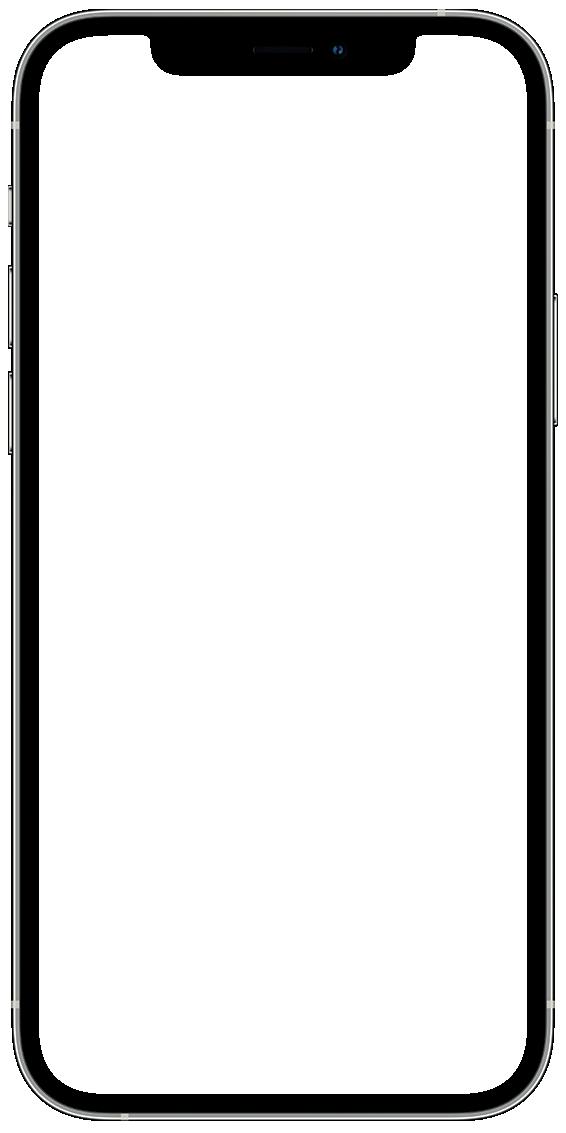Holisticly’s Loneliness Awareness Campaign 2023
Loneliness: Social Media and Technology


Loneliness: Social Media and Technology

Holisticly’s Loneliness Awareness Campaign 2023


Loneliness: Social Media and Technology
Holisticly is a progressive technology and operations company that’s revolutionizing the concept of digital health and wellness. Combining AI, telemedicine, and 40+ years of experience, we’re committed to improving health literacy worldwide, promoting preventive care, and providing integrative and digitized health solutions to a global community.

Our Holisticly® app combines state-of-the-art technology and telehealth, enabling us to provide clients with affordable and personalized health solutions that match their needs, desires, and lifestyles.
At Holisticly, we look at the person as whole; we cater to your body, mind, soul, and surroundings. We strive to bring our vision to life through the application of our unique combination of digital health services and our holistic approach toward wellness:
We aspire that our global community of users become inspired to make better-informed decisions about their wellbeing, ultimately leading healthier, happier, and more fulfilling lives.
Loneliness: Social Media and Technology
Social media and technology have become increasingly common in and essential to our everyday lives. While the social and communicative features of social media are highly valued, it has been found that spending too much time on social media sites can cause a variety of side effects, including, but not limited to, loneliness.

Research has shown that young social media users who experience loneliness, depression, and anxiety are often overly exposed to social media. Currently, one of the most popular social media platforms is Instagram, with approximately 1 billion active users each month – almost 31% of whom are between 18 and 24 years old, while 8% are between 13 and 17 years old. This means that around 168 million people under the age of 18 socialize using Instagram.
With the increasing diversity and availability of social media apps, Gen Z is assumed to be the most connected generation yet. However, between 2012 and 2018, there has been a worldwide increase in loneliness experienced by adolescents. For example, UK and US research shows that Gen Z feels significantly lonelier in comparison to other generations.
Loneliness: Social Media and Technology
If we take a look at Facebook with its 3.5 billion users worldwide, we can see that only 5% of users are adolescents (175 million), whereas 60% are around 18 to 44 years old. Indeed, a 2018 research study in the Journal of Adolescence showed how heavy use of Facebook could increase levels of social and emotional loneliness in teenagers. If we look at that pattern, we’ll notice that there’s a correlation between loneliness and social media exposure.
This begs the question: why are we lonely when we’ve got the means to help us stay connected more than ever?
Research has found that social comparison and rumination are among the leading causes impacting mental health. The average internet user spends approximately 2.5 hours a day on social media, though this figure varies from country to country. While we might be aware of it at times, we can also tend to subconsciously and inadvertently compare ourselves and our lives to the people we interact with online.

Loneliness: Social Media and Technology

In 2022, Princess Nourah University medical researchers, while conducting a study on social media addiction, discovered that 74% of participants considered themselves extremely attached, and 48% felt lonely, which highlights that a strong attachment to social media can influence how lonely we may feel.
Interestingly, Professor Hunt and colleagues from the University of Pennsylvania conducted a study in 2018, with 143 undergraduates, who were divided into two groups. For three weeks, one group had to reduce their social media use to 30 minutes per day, and the other one continued with their baseline average usage. After three weeks, the first group felt significantly less lonely and showed reduced signs of depression.
Social media has become an integral part of our lives over the last decade, allowing us to build meaningful relationships and stay connected with friends and family. However, as social media can strongly influence our mental health and wellbeing, it’s important to know how to navigate this relatively new world of online interaction.


The effects of social media use on our sense of loneliness can vary. When social media first emerged, research showed that it could help us build stronger connections with others. But, why do more recent studies indicate that too much time spent on social networking sites can leave us feeling lonely?
Several studies have found connections between intense social media exposure and feelings of loneliness, especially for young people. For older adults, the use of social media has been shown to alleviate loneliness, as it facilitates the formation or maintenance of social bonds. More socially connected older individuals are then more likely to experience a healthier physical and mental life.
Loneliness: Social Media and Technology
It’s essential to recognize that not everyone who uses social media will experience loneliness, and there are a variety of factors that can influence an individual's sense of connection with (or disconnection from) others.
Our awareness of the relationship between social media use and loneliness is essential. Thankfully, we can reduce feelings of loneliness by navigating our time wisely on social media and engaging in more meaningful activities, such as face-to-face conversations. By being mindful of our social media use, we can reap the rewards of staying connected while avoiding the potential risk of loneliness.

Technology has become an essential part of our lives, allowing us to communicate, be entertained, and even learn. But, did you know we can also use technology to build meaningful relationships and foster connections?
Social media platforms like Facebook, Twitter, and Instagram are great for connecting with friends, family, and even new acquaintances. Online communities, for example, allow us to socialize with people who share our passions and interests, creating a fantastic way to make friends and explore new interests!
Just as important, having video chat services can help us stay connected with our loved ones who live far away or abroad. We can share our happiest memories, most cherished stories, and even our innermost thoughts and emotions, ensuring we harbor feelings of safety and support, and potentially mitigate feelings of loneliness.

Additionally, we can make the most of our time on social media by taking time to explore and logging in with a purpose. Technology can be a great way to stay connected with our loved ones, but it’s important that we consider it one of many ways to have our social needs met. Try thinking of social media as a supplement, rather than a replacement for physical interactions.
Overall, technology can be a powerful tool to help us overcome loneliness. By taking advantage of the technology at our fingertips, we can regain our social spark and make sure we don't feel alone. So try opening yourself up to explore the possibilities, we never know what connections we might make!



Remember, you’re not alone. For more information on loneliness, the relationship between loneliness and social anxiety, and the link between loneliness and COVID-19, check out our other brochures!

American Psychological Association. (2019). The link
between loneliness and technology. Monitor on Psychology, 50(5).
https://www.apa.org/monitor/2019/05/ce-corner-si debar.
Guo, H. (2018). Linking loneliness and use of social
media. Faculty of Social Sciences. University of Helsinki. https://core.ac.uk/download/pdf/158607337.pdf.
R., Almutairi, A. & Almoayad, F. (2022). Social media usage and loneliness among Princess Nourah University medical students. Middle East Current Psychiatry. 29(1).
https://doi.org/10.1186/s43045-022-00217-w.
Bakry, H., Almater, A., Alslami, D., Ajaj, H., Alsowayan, Bonetti, L., Campbell, M. A., & Gilmore, L. (2010). The
relationship of loneliness and social anxiety with children's and adolescents' online communication. Cyberpsychology, Behavior and Social Networking, 13(3), 279–285. https://doi.org/10.1089/cyber.2009.0215.
Bucholz, K. (2022). Which countries spend the
most time on social media? Statista. https://www.weforum.org/agenda/2022/04/social-media-internet-connectivity/.
Chopik, W. J. (2016). The benefits of social technology use among older adults are
mediated by reduced loneliness. Cyberpsychology, Behavior, and Social Networking, 19(9), 551-556. https://doi.org/10.1089/cyber.2016.0151.
Dibb, B. & Foster, M. (2021). Loneliness and
Facebook use: the role of social comparison and rumination. Heliyon. 7(1), e05999. https://doi.org/10.1016%2Fj.heliyon.2021.e05999.
Dixon, S. (2023). Distribution of Facebook users
worldwide as of January 2023, by age and gender. Statista. https://www.statista.com/statistics/376128/fac ebook-global-user-age-distribution/.
Dixon, S. (2023). Distribution of Instagram users
worldwide as of January 2023, by age group Statista. https://www.statista.com/statistics/325587/inst agram-global-age-group/.
GCF Global. (n.d.). The now: Is technology making us
lonely? GCF Global. https://edu.gcfglobal.org/en/thenow/is-technol ogy-making-us-lonely/1/.
Hunt, M. G., Marx, R., Lipson, C., & Young, J. (2018). No more FOMO: limiting social media decreases loneliness and depression. Journal of Social and Clinical Psychology, 37(10), 751-768.
https://doi.org/10.1521/jscp.2018.37.10.751.
Kross, E., Verduyn, P., Sheppes, G., Costello, C. K.,
Jonides, J., & Ybarra, O. (January 2021). Social media and well-being: pitfalls, progress, and next steps. Trends in Cognitive Sciences, 25(1), 55-66. https://doi.org/10.1016/j.tics.2020.10.005.
O’Day, E. B., & Heimberg, R. G. (2021). Social media
use, social anxiety, and loneliness: a systematic review. Computers in Human Behavior Reports, 3, 100070. https://doi.org/10.1016/j.chbr.2021.100070.
Shultz, M. (2014). Why is social media a beneficial
relationship building tool? Michigan State University Extension. https://www.canr.msu.edu/news/why_is_social_media_a_beneficial_relationship_building_tool.
Smith, D., Leonis, T., & Anandavalli, S. (2021). Belonging and loneliness in cyberspace: impacts of social media on adolescents’ well-being. Australian Journal of Psychology, 73(1), 12-23. https://doi.org/10.1080/00049530.2021.1898914.
Twenge, J., Haidt, J., Blake, A., McAllister, C., Lemon, Wang, K., Frison, E., Eggermont, S., & Vandenbosch,
H. & le Roy, A. (2021). Worldwide increases in adolescent loneliness. Journal of Adolescence. 93(1), 257-269. https://doi.org/10.1016/j.adolescence.2021.06.006.
L. (2018). Active public Facebook use and adolescents’ feelings of loneliness: evidence for a curvilinear relationship. Journal of Adolescence, 67, 35–44.
https://doi.org/10.1016/j.adolescence.2018.05.008.
Yi Lin, L., Sidani, J., Shensa, A., Radovic, A., Miller, E., Colditz, J., Hoffman, B., Giles, L. & Primack, B. (2016). Association between social media use and depression among U.S young adults. Journal of Adolescence. 33(4), 323-331. https://doi.org/10.1002/da.22466.